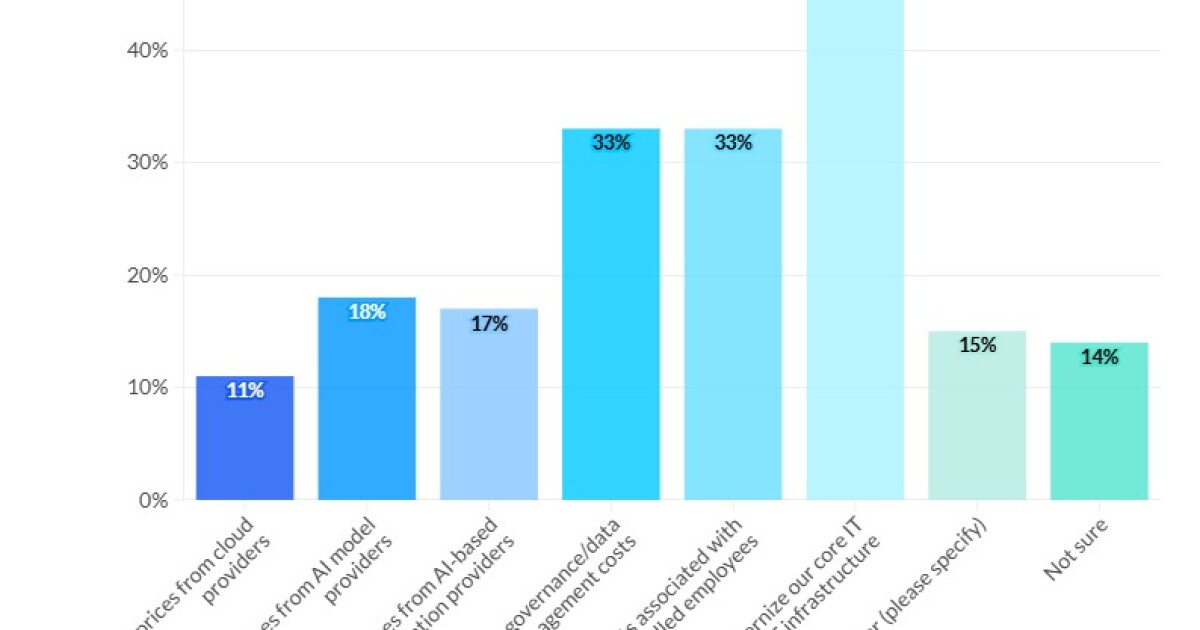
Federal Reserve officials were split about the potential inflationary impact of higher tariff rates during the central bank's monetary policy meeting last month.
Some members of the
Others believed the price-level impact of tariffs would be
Some participants also expressed optimism that negotiations would lower the ultimate impact of the Trump administration's trade policies, even though the discussion — which took place on May 6 and 7 — predated the U.S. trade deal announcement with the U.K. and the temporary pause on reciprocal
Still, anecdotal evidence shared during the meeting suggested that American companies were planning on increasing prices in response to the higher levies, even if their businesses were not directly affected by them.
"Many participants remarked that reports from their business contacts or surveys indicated that firms generally were planning to either partially or fully pass on tariff-related cost increases to consumers," the minutes note. "Several participants noted that firms not directly subject to tariffs might take the opportunity to increase their prices if other prices rise."
Despite the divergent views about the ultimate impact of tariffs, the committee members were in broad agreement that the uncertain policy outlook presented risks to both price stability and the labor market. They also agreed that the Fed's target range for the federal funds rate — between 4.25% and 4.5% — was well positioned to respond either way.
Participants remarked on some of the atypical developments that arose during the period of heightened volatility, including the fact that longer-term bond yields rose and the dollar depreciated as equities and other risk assets declined.
"These participants noted that a durable shift in such correlations or a diminution of the perceived safe-haven status of U.S. assets could have
While balance sheets for banks, households and nonfinancial institutions remained strong, the event had participants considering future changes to the central bank's emergency liquidity facilities. One topic of conversation was the Standing Repo Facility, a backstop for money markets that allows primary dealers and other counterparties to pledge certain high-quality assets as collateral for overnight borrowing. A "few participants" suggested that central clearing for the facility could encourage its use during periods of stress and might better alleviate stress in the market.
Another focal point was leveraged trades involving U.S. sovereign debt. Specifically, the Fed's open market operations staff highlighted the unwinding of positions in which investors sought to profit on the spread between Treasury yields and interest rate swaps as a factor in market volatility.
Meanwhile, another leveraged trade involving Treasury cash and futures prices — an area of particular risk in the eyes of many academics and policy specialists — "appeared to remain largely stable."
The minutes also revealed additional details about the committee's
In the years since FAIT was adopted, many academics and other economists have criticized the approach, with some saying it caused the Fed's slow response to inflation in 2021 and 2022. Central bank officials have argued that FAIT played no role in the judgment that post-pandemic inflation was "transitory," but the meeting minutes suggest the FOMC will move away from the approach.
Participants said the FAIT strategy has "diminished benefits" when risks of large inflationary shocks are elevated and when policy is far from the effective lower bound.
"Participants indicated that they thought it would be appropriate to reconsider the average inflation — targeting language in the Statement on Longer-Run Goals and Monetary Policy Strategy," the minutes read. "Participants noted that an effective monetary policy strategy must be robust to a wide variety of economic environments."



